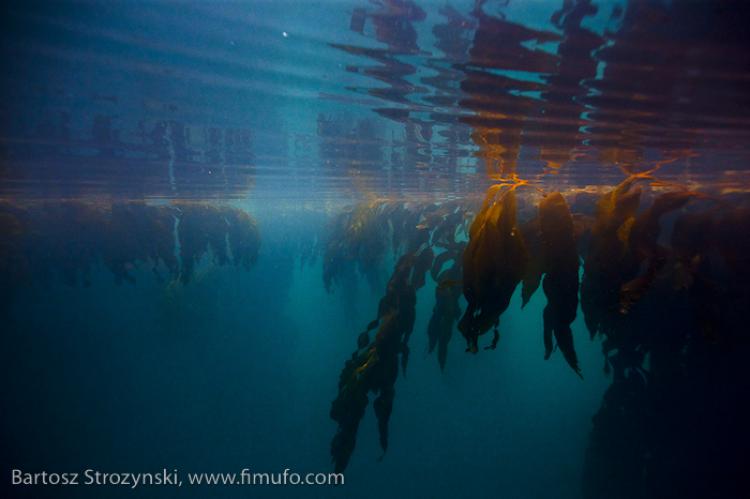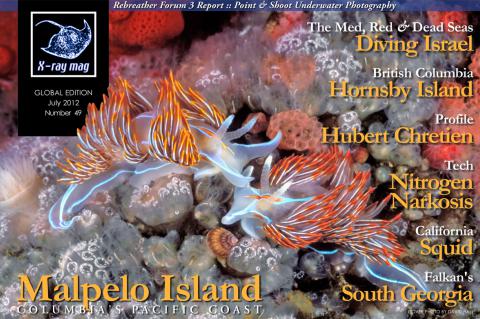South Georgia
South Georgia is the most well-known of the Falkland Islands, also called Islas Malvinas. It lies nearly at the end of the world in the Southern Atlantic Ocean. To find this place on the map, draw an equilateral triangle with one vertex on Cape Horn and another on the Antarctic Peninsula. The third vertex in the east is our destination.
Cold, windy, raw landscapes are characteristic of this mountainous, breathtaking, pristine place. It’s a living paradise where large concentrations of animals amaze all who visit.
Tags & Taxonomy
South Georgia has an interesting historical heritage. It is a whale sanctuary and a cemetery. On the island, one can find the grave of one of the most famous explorers in history, Sir Ernest Shackleton, an undisputed symbol of leadership and courage.
The territorial affiliation of the island is under diplomatic dispute. It’s currently under the jurisdiction of the United Kingdom, but Argentina is questioning the claim. This conflict even led to war in 1982.
South Georgia is a very remote place. From Europe, one must travel to Buenos Aires in Argentina, then fly further south to get a ship and finally cruise to the island. It took a really long time and a lot of money to get here.
There is no tourism infrastructure on the island. All activity is done from a liveaboard boat with catering done on the deck. Due to rapidly changing weather conditions, there is no guarantee of success on any expedition. Getting to land requires a Zodiak boat, and operating it on the rough seas in the area may be very dangerous, often impossible. Despite the challenges, there are many operators offering this destination in their portfolio.
Ghosts of the past
South Georgia holds inglorious reminders of the extensive sealing and whaling activities in the region of the past. There are numerous remains of whaling stations and whaling boats laying around, with no access, due to safety. They make a very strong impression when seen from the liveaboard.
One of these sites, called Grytviken, was cleaned and made available for visitors. Tourists can walk around and get a feeling of how the whaling process worked, what type of equipment was used and actually how brutal the process was. Several whales skeletons may be seen laying about as well. All those frightening artifacts bring about real emotion and deep reflection among visitors.
Today, South Georgia is the location of two research stations working on conservation and protection of the unique ecology of this region.
An established museum also plays an important role in preserving the historical heritage of this place, especially its sinister whaling activities of the past. It is seen as symbol of what people should never repeat. A lot of unique exhibits may be seen at the museum such as everyday objects that belonged to whaling station workers, equipment used at the time, tools, etc. There is also a section exhibiting the flora and fauna of South Georgia. In addition, there is a very specific room dedicated to Sir Ernest Shackleton and his spectacular achievements.
Sir Ernest Shackleton
Hailing form Ireland, Shackleton was an early 20th century polar explorer whose ambition was to make the first crossing of Antarctica from the Weddell Sea via the South Pole to the Ross Sea. He did not manage it, but he still became one of the most famous explorers of his time, thanks to everything that happened during his expedition in 1914-17.
Shackleton reached Antarctica with his crew, but his ship, Endurance, became trapped in pack ice in the Weddell Sea and eventually sank. Having lost the ship, the captain and crew decided to travel north over the ice to Elephant Island in the South Shetland Islands, where they spent the following days relying only upon themselves. They had some equipment they saved from the ship. They slept in tents, ate seals and penguins and waited for rescue in an extremely difficult and demanding environment.
Unfortunately, nobody knew abo heir situation, which concerned the captain a great deal. When the weather got better, Shackleton decided to sail in a small wooden lifeboat, saved from the Endurance, to South Georgia and alert the world to the crew’s desperate situation.
The captain was a really brave man. The plan to cross the distance of 1,300km in open ocean on extremely rough seas in such a tiny boat after an exhaustive time spent on the ice seemed insane, but he was really determined to save his crew.
When looking at a map, South Georgia is a tiny spot in a huge area of ocean. It was amazing that without computers, just simple navigational tools, Shackleton was able to find his way over the ocean to land on the island of South Georgia. His extensive experience and understanding of the currents paid off.
We can only imagine what could have happened if he had passed South Georgia and missed it. But this was not the end of the story. Shackleton reached the island landing on the far side. To get to the whaling station, he had to cross the mountains.
Today, it is known all over the world that Shackleton’s spectacular navigational efforts ended with his successful crossing of the island and alerting the world of his stranded crew. His outstanding courage and leadership was rewarded. After 18 months of an unbelievable fight for life in the Antarctic, the crew was saved. Shackleton returned home a hero.
Unfortunately, during his next expedition, he died, and his remains were buried on South Georgia. His grave is one of the main memorial attractions to this day.
Diving
Scuba diving is limited on South Georgia. Most of the significant attractions here are on land. Despite this, it was worth getting wet to experience this beautiful place underwater as well. Diving was mostly about watching aquatic mammals playing around, everywhere, from small bottom dwelling creatures to amazing underwater kelp forests patrolled by leopard seals.
South Georgia is really full of life; sometimes it is difficult to cross over a beach due to the number of seals resting there. Once, when watching seals playing, somebody said to me: “If I were a seal in my next life, I would like to live in South Georgia.” The sentiment described very well the friendly atmosphere here, untouched by human beings, raw and really free.
Penguins
South Georgia hosts the world’s largest concentration of King penguins, making this place uniquely interesting for scientists and tourists. On the island, there are around 600,000 King penguins in total. The largest colony contains about 300,000 individuals. It is an amazing feeling watching this endless, smelly and noisy family.
King penguins are beautiful birds when they reach adulthood. This may be a kind of compensation for childhood, because they are awfully ugly as chicks. I am not a biologist researching King penguins, but I made some intriguing observations about their lives.
On first sight, such a large colony looked like a monolith, but when I watched a bit longer, a continuous interaction among penguins could be observed, including very aggressive attacks on each other. It was similar to what people do. I saw leaders, followers, shy ones, brave ones, extraverted, introverted, etc. It amazed me, how they could live together in one place, in a limited space, and manage it well. It was incredible.
King penguins are very faithful and loyal. They normally have only one partner their whole life. As with all penguins, they feed on fish and krill. When in the water, they transform from funny, swaggering, proud animals into sleek, underwater missiles. We watched groups of penguins walking along the beaches and, time after time, jump into the water to hunt and feed. This crowded seaside looked like Copacabana—a beautiful, busy and playful place.
Seals
Seals can be found in many places on the planet, but probably nowhere with such huge concentrations as on South Georgia. Fur seals, elephant seals and Weddell seals were everywhere. If we consider that humans decimated their populations over the centuries by extensive hunting, the restoration of the species seems to have come quite quickly.
Diversity
The richness of life on South Georgia is not a miracle. There’s a reason for it. The currents flowing from Antarctica mix around the island and bring a rich river of krill to South Georgia, which feeds most of the animals living here. It explains the wildlife phenomenon of this place.
But year after year, there is more and more concern about fluctuations in krill populations, the reasons for these fluctuations, and their impact on the environment in the future.
South Georgia has many faces and inspires extreme emotions. It is a beautiful, incredible dream of freedom and life on the one hand, and a frightening reminder of the brutality of the sealing and whaling of the past, on the other hand. It is a memorial of spectacular courage and, at the same time, it has been caught in political and armed conflict.
Yet, the royalty of South Georgia is unquestioned. With 600,000 King penguins on just 3,600 square kilometers of land, living together in harmony among themselves and other species, is it not possible for us to learn to exist this way in a 21st century world? Yes, we can hope that it may be a bit inspiring to us all. ■
Based in Poland, Bartosz Stróżyński is a nature and underwater photographer, composer, lyricist, author of music videos and multimedia projects, graphic artist and sculptor with several international photo competition awards including the International Photography Awards, European Wildlife Photographer of the Year, International Nature Photo Competition Asferico and the Great Photographic Competition of National Geographic. He has participated in many photographic expeditions including the Elysium Epic Shackleton’s Antarctic Visual Epic Project. For more information, visit: www.fimufo.com
Download the full article ⬇︎

Originally published
X-Ray Mag #49
Malpelo Island: Columbia's Pacific coast; Israel: Journey beyond the three seas; Hornby Island: British Columbia getaway; Hubert Chretien interview; No need to get narked, by Mark Powell; Squid orgy in Southern California; Falkland's South Georgia Island; Point-and-shoot underwater photography; Resande Man wreck; SS Dago wreck; Rebreather Forum 3 report; Rebreather training technology; Plus news and discoveries, equipment and training news, books and media, underwater photo and video equipment, turtle news, shark tales, whale tales and much more...
.






























